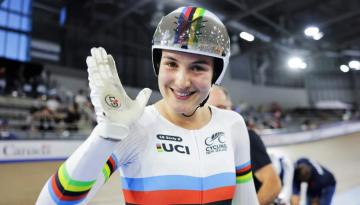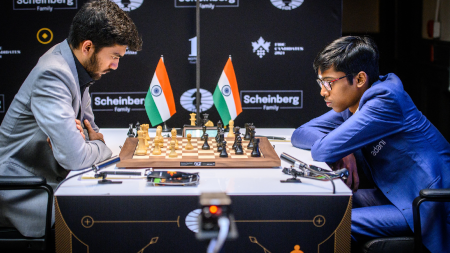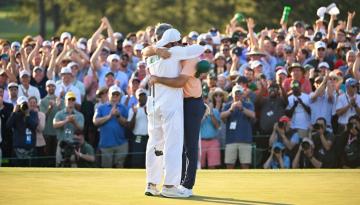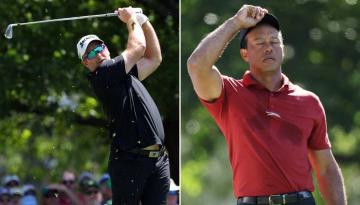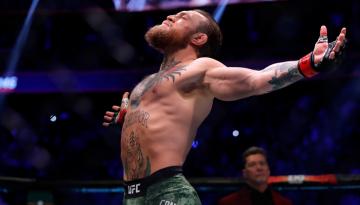“What does he know about English football?” the pundits sneered when Arsene Wenger assumed reins of Arsenal from Nagoya Grampus, a Japanese League club. Over the next two decades, the Frenchman changed the game in England, both cultural and sporting, and left the shores as a loved visionary. Several managers and players with strange accents and alien surnames would enrich and embellish the game in what is hyped as the most competitive league in the world. Yet, an innate scepticism remains, to scrutinise those from beyond the isles with an extra lens of criticism, to subconsciously find faults and flaws, and to pounce on their slightest slip-ups.
This season, Erling Haaland would have fathomed the merciless scrutiny from former players, failed managers and middle-aged fanboys masquerading as pundits, the meaning of their mic-picking, often reduced to hectoring rivals. The Norwegian, former Liverpool defender Jamie Carragher wrote in a column for The Telegraph, is a world-class finisher but not a world-class player yet. “An ultimate luxury player”, reads his first sentence. The piece, in itself, is not a scathing rant on Haaland, but clickbait-ish stuff naturally swallowed the meat of the copy, which focuses on where Haaland needs to improve, and how high-class centre-backs have suffocated him in recent times. His sparring partner in the commentary box, Roy Keane, too entered the ring, remarking that “he is almost like a League Two player”, after his lacklustre performance against Arsenal two game-weeks ago.

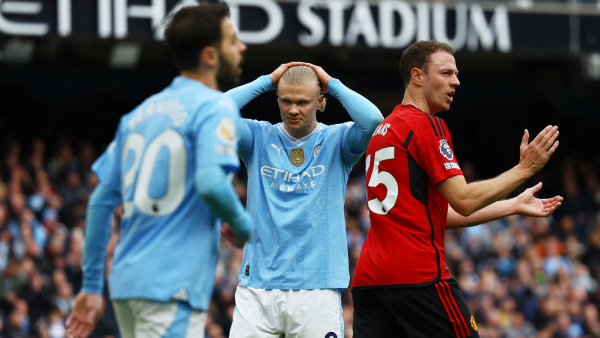 Manchester City’s Erling Braut Haaland reacts after missing a chance to score. (Reuters)
Manchester City’s Erling Braut Haaland reacts after missing a chance to score. (Reuters)
All that made it sound as though Haaland has endured a harrowing patch. It is both true and untrue. He has not bettered or matched the stratospheric standards of last season, wherein he racked up 52 goals in 53 games, besides plotting nine assists, in City’s treble-winning season. This season, his numbers are a more mortal 31 strikes and half a dozen assists from 38 games. He has missed more straightforward chances than ever before (the one against Manchester United baffles!), he has meandered anonymously in several games. skilled defenders like Antonio Rudiger and William Saliba have indeed strangulated him. He sits 557th among 562 in the non-penalty goals minus expected goals ratio, a loose measure of striking efficiency. He has scored just one goal in eight games this season against the top four in the Premier League and Real Madrid.
But all this was only to be expected. The second season would have always been tougher than the first. Defenders get more accustomed to his movements and patterns, analysts spend more time on detecting his fallibilities. Even greats like Cristiano Ronaldo and Lionel Messi have waded through such passages. Barcelona rendered Ronaldo a mere spectator in the 2009 Champions League final, and as did Inter Milan lock Messi in the next edition.
But both bounced back to scale greatness. Haaland has not yet been granted entry to that hallowed space, but his prowess gleams. Easily forgotten is that he spent a considerable time of the season on the treatment table. It perhaps explains his rush to strike — last season he spent .88 seconds for every goal-bound shot. This season, he has expended only .69. He could be over-wary of tackles flying into him. With more goals, he could rediscover his composure.
Goal-scorer, nothing else
Another much circulated criticism is that Haaland could be a liability when he does not score. Of the 41 games he has not scored in, City have lost nine. When he scores, the win percentage shoots to 88. Keane blasted his lack of work-rate when City did not have the ball and his lack of contribution in defensive transitions.
 Manchester City’s Erling Haaland, centre, celebrates after scoring his side’s third goal during the English Premier League soccer match between Manchester City and Luton Town at Etihad stadium in Manchester, England. (AP)
Manchester City’s Erling Haaland, centre, celebrates after scoring his side’s third goal during the English Premier League soccer match between Manchester City and Luton Town at Etihad stadium in Manchester, England. (AP)
But this was a pact with the devil Guardiola made when he signed him, when he chose a classical striker for a false nine, or an auxiliary midfielder. He had to retool his team to a more direct entity, as Haaland likes the ball quickly into him. It meant less control in midfield and fewer passing options in the centre of the park. The absence of John Stones, the play-making centre-back, the recurring injury to Kevin de Bruyne and the departure of Ilkay Gundagon this season only compounded Guardiola’s woes and, in turn, reduced the Haaland’s influence.
There, though, are ample signs that he is sharpening his defensive side. There was an instance in the game against Real Madrid wherein he galloped back frenziedly to catch Vinicius Junior at the other end. Guardiola pointed out how he has helped create space for his colleagues. “He helps us to make more spaces in the areas and his contribution has been exceptional since the day he arrived last season,” he said before the game against Luton Town when probed about Haaland’s impact.
The City manager, of course, has heard and read about the doomsday narratives surrounding Haaland from the day he landed in England. From ‘will he adapt to the physicality in the Premier League’ to ‘how long will the bubble last’ tropes. Last year, he would even say: “You are waiting for Haaland to fail.”
Still they are, and even minute blemishes are overblown. And they would be when Real Madrid arrive at the Etihad this week to decide the Champions League quarterfinal. He might nick a goal, or perhaps not, he might win another treble, win the Golden Boot and perhaps the Ballon’d’Or. But the same rant would echo: “What does he know of English football?”
Disclaimer: The copyright of this article belongs to the original author. Reposting this article is solely for the purpose of information dissemination and does not constitute any investment advice. If there is any infringement, please contact us immediately. We will make corrections or deletions as necessary. Thank you.
